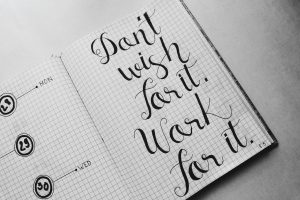The Art of Crafting a Creative Resume
When it comes to job hunting, one of the most crucial elements for standing out in a competitive market is a well-crafted creative resume. Understanding the significance of a creative resume and tailoring it to resonate with the target audience are essential steps in the job application process.
Importance of a Creative Resume
A creative resume serves as a powerful tool to showcase your unique skills, experiences, and personality to potential employers. In a sea of traditional resumes, a creative approach can capture the attention of hiring managers and leave a lasting impression. By infusing creativity into your resume, you have the opportunity to differentiate yourself from other applicants and demonstrate your innovative thinking.
Employers often appreciate candidates who go beyond the standard resume format and present information in a visually appealing and engaging manner. A creative resume can convey not only your qualifications but also your creativity, attention to detail, and ability to think outside the box – qualities that are highly valued in dynamic work environments.
Understanding the Target Audience
Before delving into the design and content of your creative resume, it’s essential to have a clear understanding of your target audience – the hiring managers and recruiters who will be reviewing your application. Tailoring your resume to resonate with their expectations and preferences is key to making a positive impression.
Consider the industry, company culture, and specific job requirements when crafting your creative resume. Understanding the values and objectives of the organization can help you align your resume with what the employer is seeking in a candidate. By researching the company and its industry, you can tailor your resume to mirror its ethos and highlight the experiences and skills that are most relevant to the role.
Incorporating keywords and phrases from the job description can also enhance the visibility of your resume in applicant tracking systems (ATS) used by many employers. By customizing your resume to match the expectations of the target audience, you increase your chances of making a strong connection and being invited for an interview.
The art of crafting a creative resume goes beyond aesthetics; it involves strategic thinking and a deep understanding of your audience’s needs and preferences. By embracing creativity while remaining targeted and tailored to the employer’s expectations, you can elevate your resume and position yourself as a standout candidate in the job market.
Designing Your Creative Resume
When it comes to crafting a creative resume that grabs the attention of hiring managers, the design plays a crucial role in setting you apart from other job seekers. In this section, we will delve into essential tips for the layout and formatting of your resume, as well as the strategic use of visual elements to enhance its overall appeal.
Layout and Formatting Tips
The layout and formatting of your creative resume are what first catch the eye of recruiters. A well-structured resume not only looks professional but also guides the reader through your qualifications and experiences effortlessly. Consider the following layout and formatting tips to make your resume visually appealing and easy to read:
| Formatting Tip | Description |
|---|---|
| Choose a clean and modern font | Opt for fonts like Arial, Calibri, or Garamond for a professional look. Avoid decorative fonts that may be difficult to read. |
| Use bullet points for easy scanning | Bullet points help break down information into concise, digestible points. |
| Maintain consistent formatting | Ensure uniformity in font sizes, styles, and spacing throughout your resume for a polished appearance. |
| Utilize white space effectively | Leave adequate margins and spacing between sections to prevent your resume from appearing cluttered. |
By following these layout and formatting tips, you can create a visually appealing resume that engages the reader from the first glance. A well-organized and aesthetically pleasing layout can make a significant difference in how your resume is perceived by potential employers.
Incorporating Visual Elements
Incorporating visual elements into your creative resume can add an extra layer of interest and help highlight key information. Visual elements such as icons, graphs, charts, and color accents can draw attention to important details and make your resume stand out. Here are some effective ways to incorporate visual elements into your resume:
- Icons and Symbols: Use icons to represent different sections or skills in your resume, making it visually engaging and easy to navigate.
- Graphs and Charts: Graphs or charts can visually showcase your skills proficiency or work experience timeline in a dynamic and appealing way.
- Color Accents: Incorporating color accents strategically can help certain information pop out and create a cohesive visual identity for your resume.
- Infographics: Create simple infographics to present data or achievements creatively, breaking the monotony of text-based resumes.
When integrating visual elements into your resume, remember to maintain a balance between creativity and professionalism. Visual elements should enhance the overall design of your resume and help communicate your qualifications effectively. For more insights on crafting an engaging job application, check out our article on job-hunting tips and tricks.
Content Strategies
Crafting a creative resume involves more than just an eye-catching design; it also requires strategic content that effectively showcases your qualifications. In this section, we will explore two key content strategies for your creative resume: highlighting relevant experience and skills and adding a personal touch.
Highlighting Relevant Experience and Skills
When creating a creative resume, it’s essential to prioritize the most relevant experience and skills that align with the job you are applying for. Tailor your resume to highlight achievements and responsibilities that demonstrate your value to potential employers. Use quantifiable metrics and achievements to provide concrete evidence of your capabilities.
Consider the job description and identify key keywords and requirements. Mirror these keywords in your resume while showcasing how your experience and skills directly meet the needs of the position. Utilize bullet points and concise statements to make this information easily scannable for recruiters. Remember, quality is key, so focus on including impactful details rather than overwhelming the reader with excessive information.
Adding a Personal Touch
While professionalism is crucial in a resume, adding a personal touch can help your application stand out and leave a lasting impression on recruiters. Incorporating elements of your personality or interests can create a more engaging and memorable experience for the reader.
One way to infuse a personal touch is through a well-crafted career summary or objective statement that showcases your unique strengths and aspirations. Additionally, consider including relevant extracurricular activities, volunteer work, or hobbies that demonstrate skills not captured in your work experience.
Another effective way to personalize your resume is to include a professional headshot or a creative header that reflects your personal brand. However, ensure that these elements align with the industry and company culture you are targeting.
By strategically highlighting your experience and skills while infusing a personal touch into your resume, you can create a compelling document that captures the attention of recruiters and sets you apart from other applicants. Remember to continuously evaluate and update your resume to reflect your evolving career goals and achievements. For more insights on effective job search strategies, visit our article on effective job search strategies.
Showcasing Creativity
To stand out in a competitive job market, leveraging creativity in your resume can make a significant impact. In this section, we will explore two key strategies for showcasing creativity on your resume: using infographics and visuals, and incorporating creative language.
Using Infographics and Visuals
Incorporating infographics and visuals in your resume can help break the monotony of text-heavy documents and make your key information more visually appealing and memorable. Infographics allow you to present data, skills, and achievements in a dynamic and engaging format, capturing the attention of hiring managers at first glance.
When using infographics and visuals in your resume, it’s essential to strike a balance between aesthetics and readability. Ensure that the design enhances the content rather than overpowering it. For instance, you can create a visual timeline of your career achievements or display your skills graphically to provide a quick overview for recruiters.
Consider the following examples:
| Infographic Type | Purpose |
|---|---|
| Timeline | Displaying career progression |
| Skill Matrix | Highlighting skill proficiency |
| Achievement Chart | Showcasing accomplishments |
Integrating infographics and visuals strategically can help convey your qualifications more effectively, making a compelling case for why you are the ideal candidate for the role.
Incorporating Creative Language
In addition to visual elements, incorporating creative language in your resume can help communicate your personal brand and unique value proposition to potential employers. Creative language involves using vivid and descriptive words to showcase your accomplishments and experiences in a more engaging way.
Instead of using generic phrases, consider using action verbs and descriptive adjectives to paint a clear picture of your contributions. For example, instead of stating “responsible for managing a team,” you could say “led a dynamic team to achieve project milestones ahead of schedule.”
By infusing your resume with creative language, you can bring your achievements to life and leave a lasting impression on recruiters. Remember to tailor your language to the specific job and industry you are targeting to ensure that your creativity resonates with the employer’s expectations.
Crafting a creative resume that effectively combines infographics, visuals, and creative language can set you apart from other job seekers and demonstrate your ability to think outside the box. Experiment with different design elements and language styles to create a resume that not only showcases your qualifications but also reflects your personality and unique approach to work.
Tailoring Your Resume
When it comes to job hunting, tailoring your resume to fit the specific requirements of each job application can significantly enhance your chances of standing out to potential employers. This section focuses on two key aspects of customizing your resume: adapting it for different job applications and optimizing it for applicant tracking systems (ATS).
Customizing for Different Job Applications
Customizing your resume for each job application involves tailoring the content to align with the job requirements and showcase your most relevant skills and experiences. By carefully studying the job description and understanding the needs of the employer, you can strategically highlight the aspects of your background that best match the position.
Creating a master resume that includes all your experiences and achievements can serve as a foundation for customizing. For each application, selectively pick and modify the information to highlight what is most pertinent to the specific role. This approach ensures that your resume is impactful and tailored to each job opening, increasing your chances of making a strong impression on hiring managers.
Optimizing for Applicant Tracking Systems
In today’s digital age, many companies utilize applicant tracking systems (ATS) to streamline the recruitment process. These systems automatically scan and filter resumes based on predefined criteria, such as keywords, skills, and credentials. To ensure your resume gets past ATS and reaches human reviewers, it’s crucial to optimize it for these systems.
One key strategy is to incorporate relevant keywords from the job description into your resume. Identify the specific terms and phrases used in the job posting and strategically place them throughout your resume, particularly in the skills and experience sections. This not only helps your resume pass through ATS scans but also demonstrates to the hiring manager that you possess the qualifications they are looking for.
In addition to keywords, formatting your resume appropriately can also improve its ATS compatibility. Use standard fonts, headings, and bullet points to enhance readability. Avoid using images, graphics, or elaborate designs that may confuse the system. By following these optimization techniques, you can ensure that your resume is not only visually appealing to human readers but also ATS-friendly, maximizing its chances of getting noticed by potential employers.
Tailoring your resume for different job applications and optimizing it for applicant tracking systems are essential steps in the job hunting process. By customizing your resume to meet the specific requirements of each job and ensuring it is ATS-friendly, you can increase your prospects of landing interviews and ultimately securing your desired position. For more inspiration on successful job search strategies, explore our article on job-hunting tips and tricks.
Final Touches
Before submitting your creative resume, it’s essential to focus on the final touches to ensure that it effectively represents your skills and experiences. This section covers the crucial steps of proofreading and editing, as well as seeking feedback and revising your resume.
Proofreading and Editing
Proofreading and editing are fundamental aspects of the resume refinement process. After crafting your creative resume, take the time to carefully review it for any grammatical errors, spelling mistakes, or formatting inconsistencies. A well-polished resume demonstrates professionalism and attention to detail, which are highly valued by potential employers.
Here are some key elements to consider during the proofreading and editing stage:
| Element to Check | Details |
|---|---|
| Grammar and Spelling | Ensure that there are no grammatical errors or misspelled words in your resume. |
| Formatting Consistency | Check that the font styles, sizes, and spacing are consistent throughout the document. |
| Content Accuracy | Verify that all information, including contact details and job history, is up to date. |
| Bullet Point Alignment | Align bullet points and lists for a neat and organized appearance. |
| Achievements and Keywords | Highlight relevant achievements and use industry-specific keywords for impact. |
Remember to use tools like spell checkers and grammar checking software to catch any overlooked errors. Additionally, consider asking a trusted friend or colleague to review your resume for a fresh perspective.
Seeking Feedback and Revising
Once you have proofread your creative resume, seek feedback from individuals in your network, such as mentors or industry professionals. Constructive feedback can provide valuable insights into how your resume is perceived by others and offer suggestions for improvement.
When gathering feedback, consider the following points:
- Ask for feedback on the overall design, clarity, and relevance of the content.
- Inquire about any information that may be unclear or needs further detail.
- Request suggestions on how to enhance the visual appeal and readability of your resume.
- Seek advice on tailoring your resume to specific job applications and target industries.
Based on the feedback received, revise your creative resume accordingly to address any identified areas for enhancement. Making thoughtful revisions demonstrates your commitment to presenting a polished and compelling document to potential employers.
By focusing on proofreading, editing, seeking feedback, and revising your creative resume, you can ensure that it effectively showcases your unique qualifications and stands out in a competitive job market. Remember to tailor your resume for each job application to maximize its impact. If you’re looking for additional job search strategies, check out our article on effective job search strategies.



